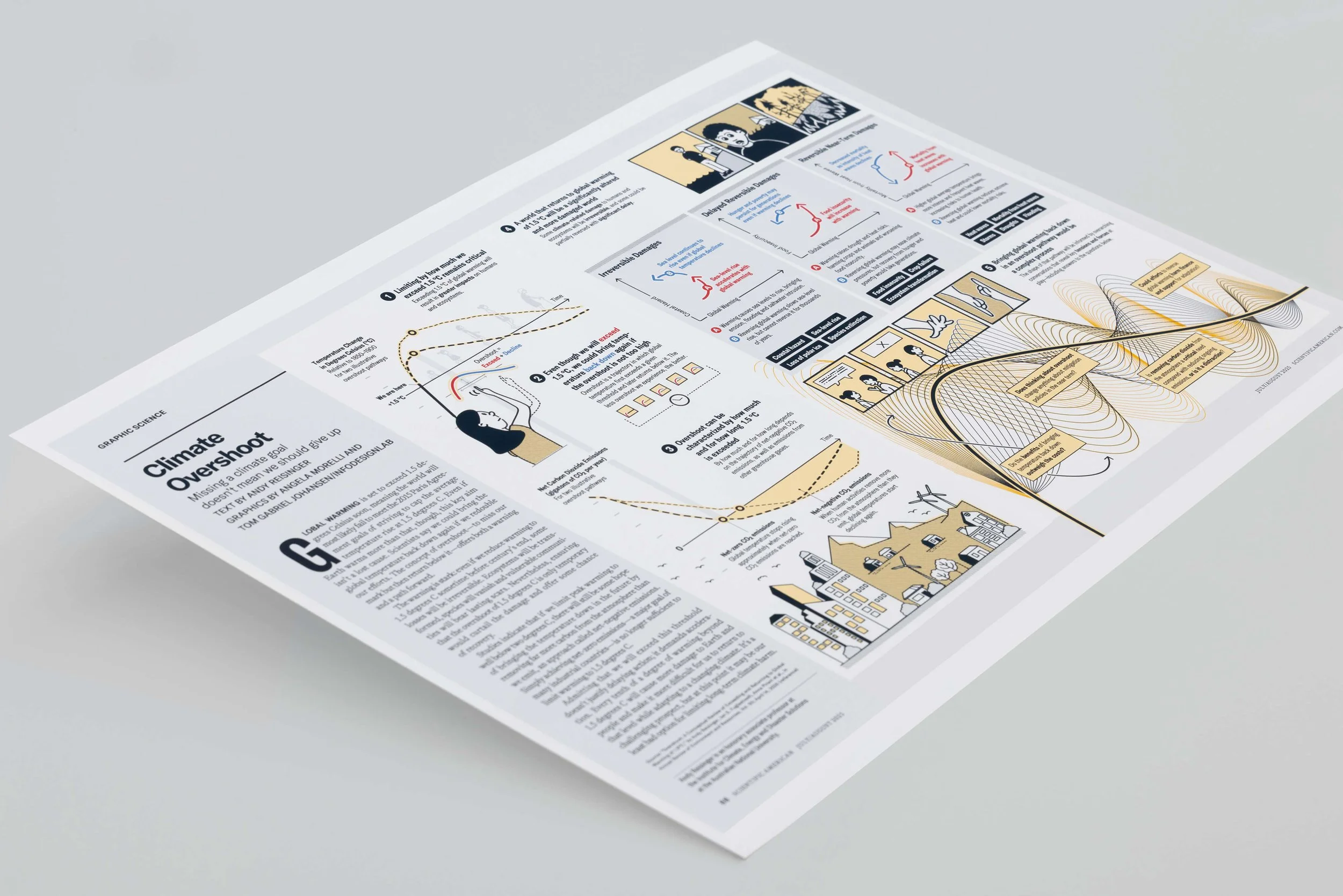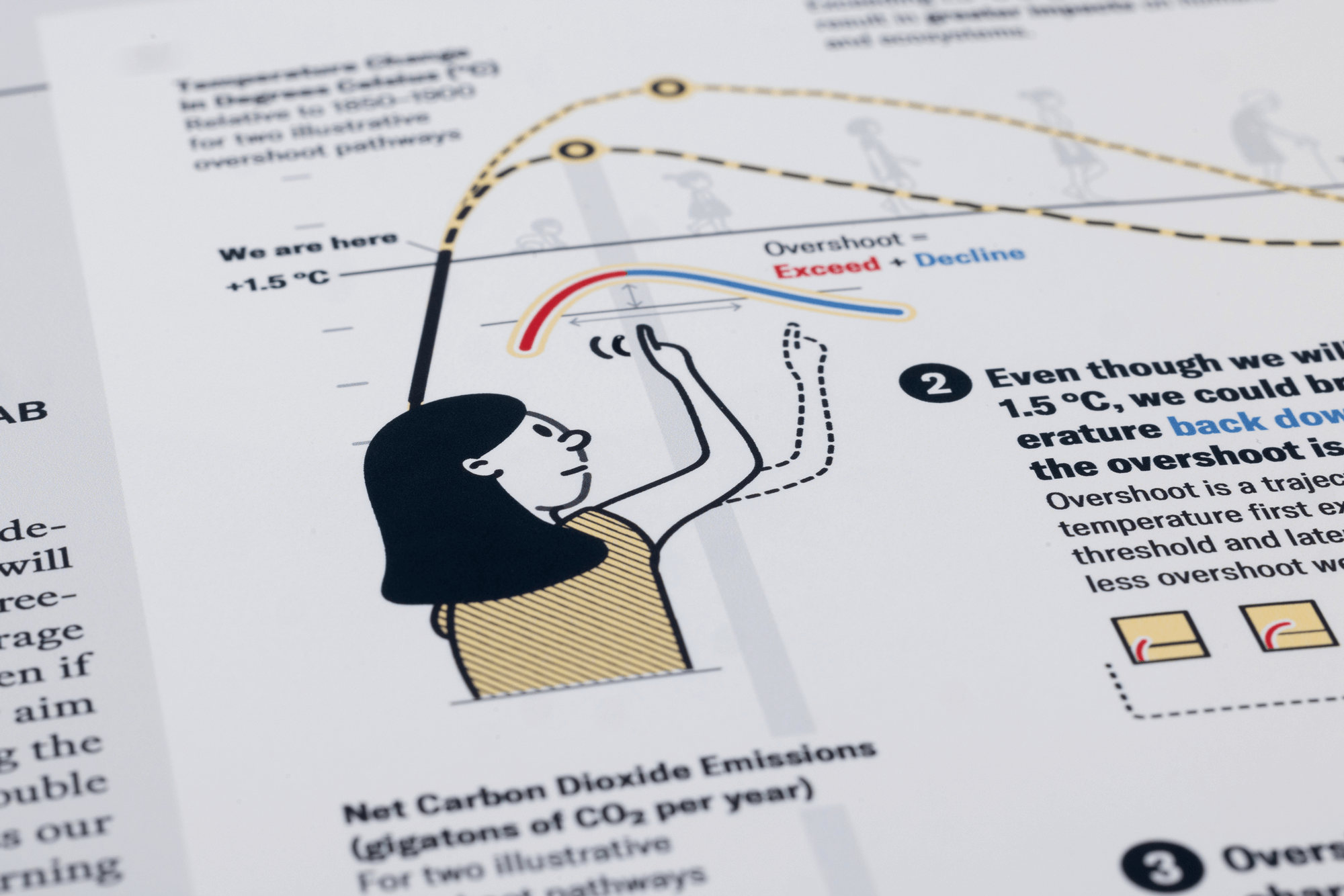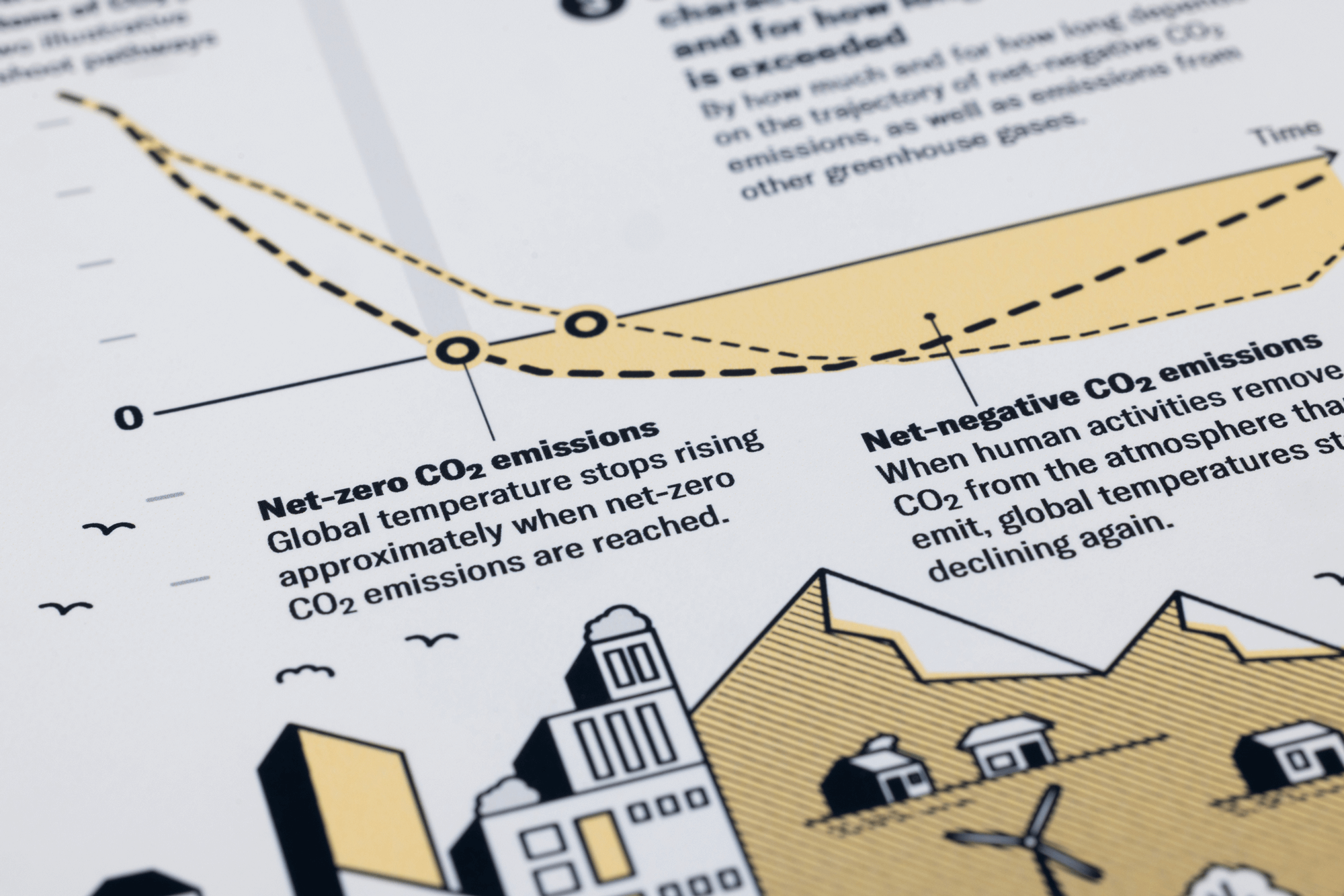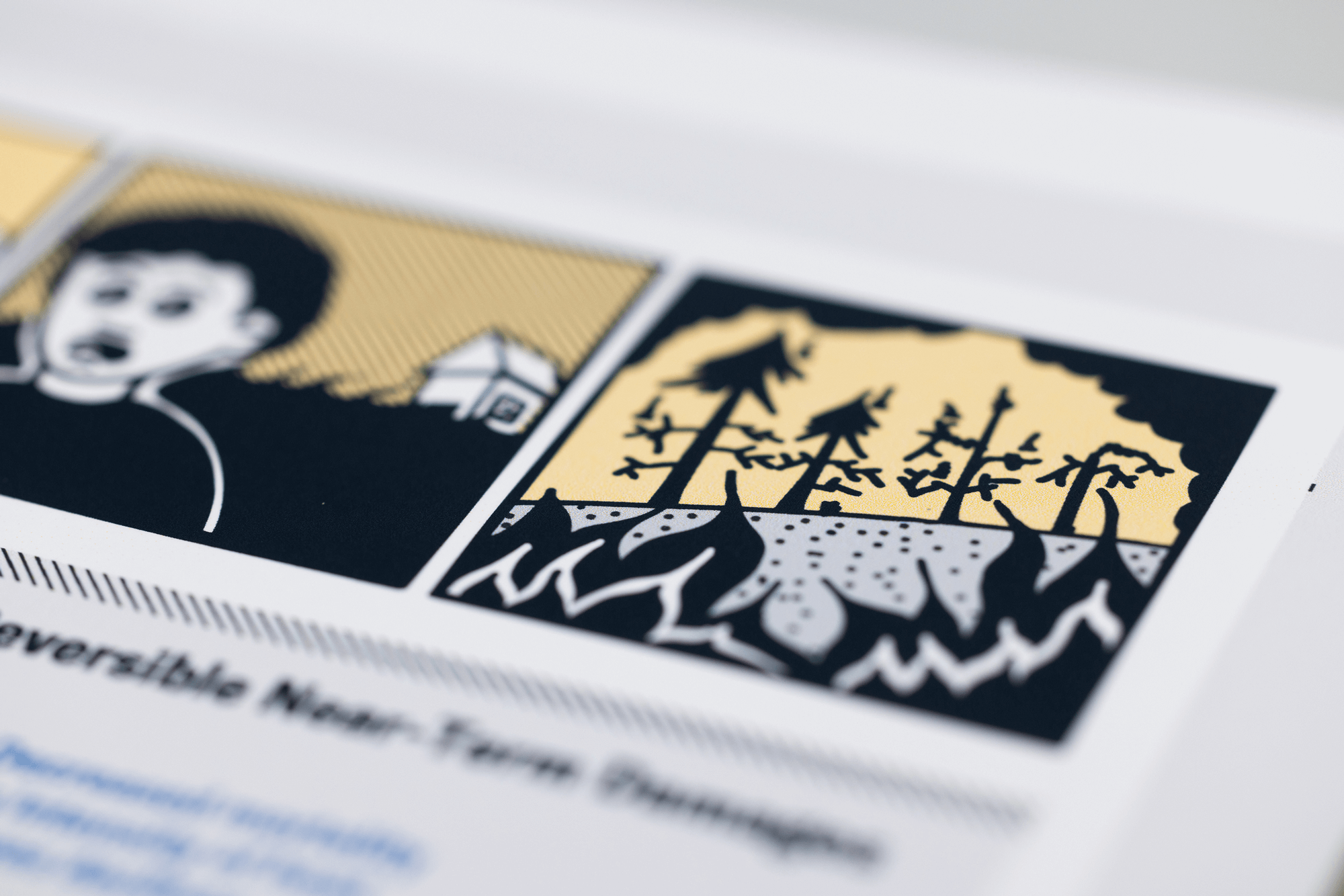Scientific American, Overshoot
Missing a climate goal doesn’t mean we should give up. A snapshot of a concept that will be increasingly central to climate negotiations, technical in its scientific foundation, and yet vital for the public to grasp.

In the summer 2025, Scientific American devoted a double spread to one of the most pressing topics in climate science: climate overshoot. The visual spread was the result of a collaboration between the magazine’s editorial team, led by Jen Christiansen; InfoDesignLab and climate scientists Andy Reisinger (author of the accompanying column), Anna Pirani, and Jan S. Fuglestvedt, who have been part of the core scientific team during the design process. The goal was to offer a snapshot of a concept that will be increasingly central to climate negotiations, technical in its scientific foundation, and vital for the public to grasp.


The world’s average temperature has increased by more than 1°C since the beginning of the Industrial Revolution. By the early 2030s global warming will reach a 1.5°C increase. The Earth is warmer than ever before in the history of human civilisation.
The IPCC’s sixth assessment report makes clear that with every increment of warming, climate extremes and risks increase and affect people, ecosystems, and the life-support systems of our planet.
These trends are in stark contrast with the Paris Agreement’s ambition to “pursue efforts to limit the temperature increase to 1.5°C above preindustrial levels“, recognizing that staying within that limit would significantly reduce the risks and impacts of climate change.
The ‘magical’ 1.5 °C is a compromise — as Dr Friederike Otto writes — a compromise between death, damage, and loss on the one side, and profits from burning fossil fuels on the other. It is a political target, a social limit rather than a physical one.
Even though exceedance of 1.5°C of global warming is now largely inevitable, such exceedance can be limited in magnitude and duration, and sustained global action could bring global warming back down to 1.5°C before the end of the twenty-first century.
Overshoot describes a trajectory where global temperatures rise beyond the 1.5°C threshold of warming (one of the core goals of the 2015 Paris Agreement) before eventually being brought back down. Even if temporary, this exceedance carries profound risks: ecosystems may collapse, species may be lost forever, and vulnerable communities may bear damages that cannot be reversed.
Admitting that overshoot is increasingly likely is not a justification for delay. On the contrary, it calls for faster and deeper action. Every tenth of a degree above 1.5°C makes it harder to return, and ensures that some damages will be locked in.

The spread we designed for Scientific American builds on the foundations of a year-long collaboration InfoDesignLab carried out with a team of leading climate scientists, which culminated in the Annual Reviews article Overshoot: A Conceptual Review of Exceeding and Returning to Global Warming of 1.5°C. That project involved extensive dialogue with leading climate researchers and resulted in a suite of visualisations that needed to be both rigorous and precise for scientific readers.
The Scientific American spread is a continuation of that work, translating its insights for a broader public audience. The goal was to expand into narrative communication, adding layers of narratives and visual concepts.
We structured the narrative around five key “atoms”:
Limiting by how much we exceed 1.5°C remains critical
Even though we will exceed 1.5°C, we could bring temperature back down again if the overshoot is not too high
Overshoot can be characterised by how much and for how long 1.5°C is exceeded
A world that returns to 1.5°C will be significantly altered and more damaged
Bringing warming back down will be a complex process
This progression created a balance of warning and possibility. The left-hand side introduced the concept step by step, guiding the reader from familiar metrics to the less intuitive dynamics of Overshoot. The right-hand side mapped consequences: irreversible, delayed, and reversible damages. The composition closed with open questions that point toward the societal choices ahead.

The double spread is the result of a co-design process. Andy Reisinger and the core scientific team played a central role in shaping the message. Jen Christiansen and the Scientific American team brought their editorial expertise and deep understanding of the magazine’s readership. At InfoDesignLab, we worked across narrative structure, visual language, and the craft of design assets, illustrations, annotations, acting also as facilitators of a process that had to reconcile multiple perspectives.
Among the atoms, one of the most distinctive is the one of multiple overlapping lines, first developed in the Annual Reviews project. This visual is a metaphor: the journey through overshoot is not a single decision but rather a complex path with different motivations and pressures pulling in multiple directions.
